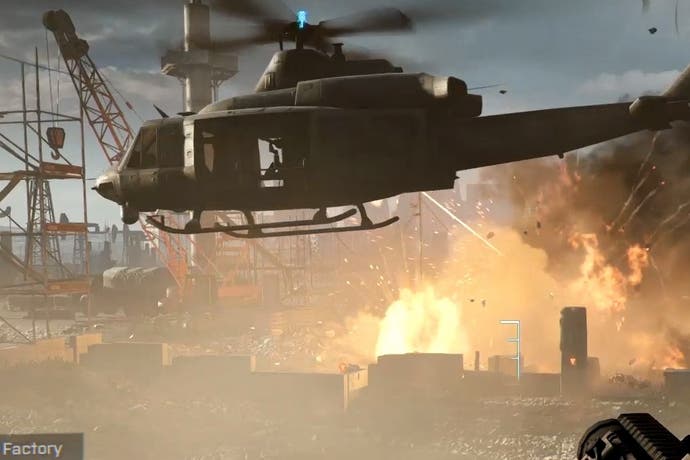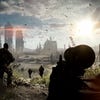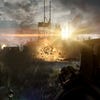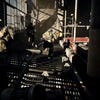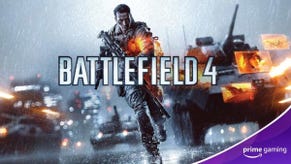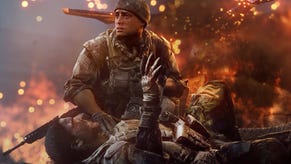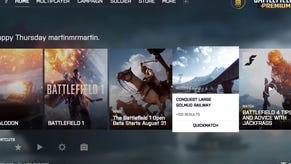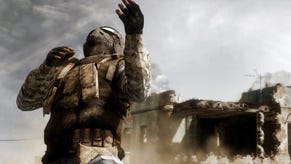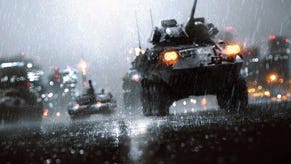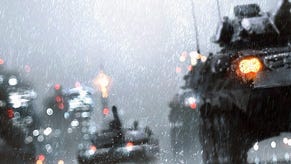Tech Analysis: Battlefield 4: Fishing in Baku
Blown away.
At long last, we have a clear visual on the next major Battlefield title, with developer DICE unleashing a full wave of Battlefield 4 details last week in its whopping 17-minute Fishing in Baku trailer. Visually, this extended cut of in-game footage succeeds in its mission to dazzle like few other games can, and crucially it shows us what results the latest Frostbite 3 engine can achieve on both high-end PCs and, presumably, next-gen consoles. This isn't just about first-person shooters, however: with Bioware also keen to chip in that this technology forms the basis of follow-ups to its Mass Effect and Dragon Age series, its advances represent much more as we look to the future.
But what exactly has changed since the second Frostbite engine, unveiled in 2011's Battlefield 3? Its roots in DirectX 11 are once again extended to allow for improved tessellation tech on characters and geometry, new rain and fog effects, plus a revised destruction engine. The trailer also makes a big point of demonstrating a breadth to the campaign's level design that the third-entry notoriously lacked. Battles now play out across vast expanses of terrain, with an emphasis on carving out your own route by blasting through walls, riding vehicles or calling in air-strikes. Set-pieces and chases down tight corridors are still fixed into the game-flow to funnel players through its story, but even so, Battlefield 4 sets out to throw you back into the sandbox wherever possible, bringing it much closer to the multiplayer side of the experience.
The trailer itself runs at 1080p (though DICE reckons it's downscaled from a 3K rendering resolution), running at 60FPS, tracking the Tombstone squad's journey through flooded, graffiti-spoiled corridors to swampy jungle pathways, before emerging to a horizon of developing skyscrapers. As a technical declaration of intent, it's a bold one, and aesthetically comparable to the Operation Swordbreaker mission used to break the ice at Battlefield 3's reveal - only this time pushing past the focus on rooftops, stairwells and market-stall alleys.
"Visually, BF4 succeeds in its mission to dazzle like few other games can, crucially showing us what results Frostbite 3 can achieve on high-end PCs and, presumably, the next wave of consoles."
Alternative 720p60 version: Capable hardware required for smooth playback
One of the biggest draws of the demo is the quality of the facial animation shown at the very start. The motion capture is far beyond what we've seen before from the series, with the new tessellation tech allowing for a closer mapping of actor's faces. Lip-sync looks closely matched as a result, and body captures are convincing too as your squad interacts with the environment - putting to use the same in-house ANT capture tech wielded by the FIFA series. For all its successes here, the lack of eye movement gives the game away somewhat during close scrutiny, but animation stands as a big leap forward that brings Battlefield 4 almost up to par with LA Noire's heavy-handed MotionScan approach.
In scenes where lighting is in full effect, the level of texture detail on characters' faces and clothes goes one step further than Battlefield 3: skin shaders react to the conditions of the environment, with sunlight bringing out fleshy, red tones on character cheeks, while a reflection map layer is used to reflect sweat during the first underwater sequence. It's very convincing in motion - recurring faces in the last game's earlier levels, such as Montes', appear less richly textured compared to what we're seeing here.
This heightened sense of detail also extends to objects across urban terrain, with jungles making a brief but impressive showing in the demo. Trees sway as before when left untouched, but now foliage dynamics have been expanded, allowing fern bushes to bend and snap upright as soldiers pass by. Environmental draw distance is unflinching on arriving at the final industrial area, where level-of-detail (LOD) pop-in can only be spotted on reflection maps on the mud-tracks as you run forward. There is a subtle use of instancing for repeated geometry like buildings, too, allowing for significant savings on RAM, plus the culling of minor assets based on your proximity to them. Even so, compromises are hard to pick out, and the engine once again avoids performance spikes thanks to the use of a dedicated thread for texture and vertex streaming.
"The dynamic sandbox arena and emphasis on team tactics brings more of the essence of the multiplayer game into the solo campaign."
Destruction physics play a larger role in Battlefield 4's single-player adventure as well, reprising one of the core tenets of the series. Where before you could only chip away at predefined chunks of scenery to diminish cover in Battlefield 3, or blow away the iron shielding on bridges, the latest entry gives the impression that players more fully engage with the environment. If structures or barricades are involved, it's possible to smash through entire surfaces with explosives to expose the enemy AI or open up a route for yourself. This is much like its implementation in the series' Bad Company off-shoots. Air-strikes also cause larger structures to topple over outright, though it remains to be seen whether this can be achieved by weakening ground supports of buildings with your own fire-power.
The focus on terrain deformation is supported by the excellent effects work, with high-quality particles and alpha adding to these explosive spectacles. Rubble bursts from newly-forged openings in walls and spark and fire effects ripple upwards from ignited vehicles - casting per-pixel lighting across environments. Much of this is achieved in the previous game, but having the campaign play out in such a dynamic, sandbox arena means we finally get to see these effects put to more impressive use. Newly added weather effects are also in evidence during the drizzly driving segment near the coast. We'd love to see this extend to a dynamic system that could affect the multiplayer mode, with fog impacting visibility over distances.
The game's slew of lighting effects also weighs heavily on this notion of player visibility. We see lens flare and light shafts flickering through distant smoke plumes, and also a bokeh distortion effect on light sources just out of focus. Along with the flocks of crows circling the construction site, these tiny details add hugely to the aesthetic appeal of the scene, and also serve a tactical purpose for drawing the eye. For Battlefield 3, this took the form of an exaggerated lens flare on guns equipped with laser sights and flashlights, both of which shone brightly to obstruct a player's view when looking directly. It worked well to showcase Frostbite Engine 2's advances in lighting, but here it appears toned down to support a more realistic aesthetic.
With regards the graphical setup of the demo, everything points to the settings being absolutely optimal and maxed out. Shadows are at the highest filtering setting with no flickering in sight, and horizon-based ambient occlusion (HBAO) is locked in to avoid the excessive halo effect of the screen-space alternative. In terms of post-processing effects, we have both per-object and full-screen motion blur making the cut and the 1080p image is very likely being treated to the anti-aliasing options offered by Battlefield 3's 'ultra' preset. This includes a mixture of deferred, multi-sample AA for geometric edges, plus a high-quality FXAA pass to clear up jaggies on 2D elements such as foliage. Some level of super-sample anti-aliasing is presumably in place too, assuming an internal 3K rendering resolution.
"The demo ran on a £700 AMD graphics card to spectacular effect, but with BF3, DICE has already proven that its top-end visuals scale back effectively onto less capable platforms."
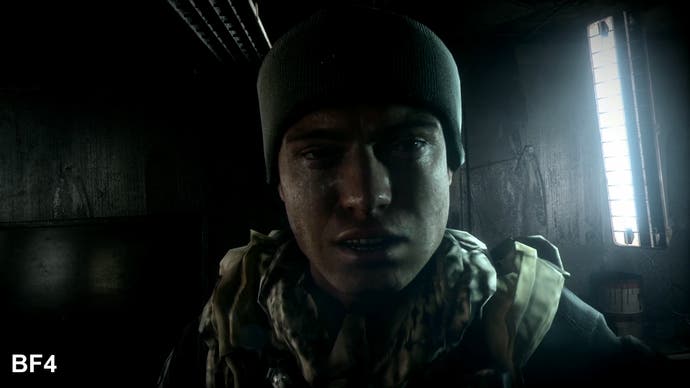
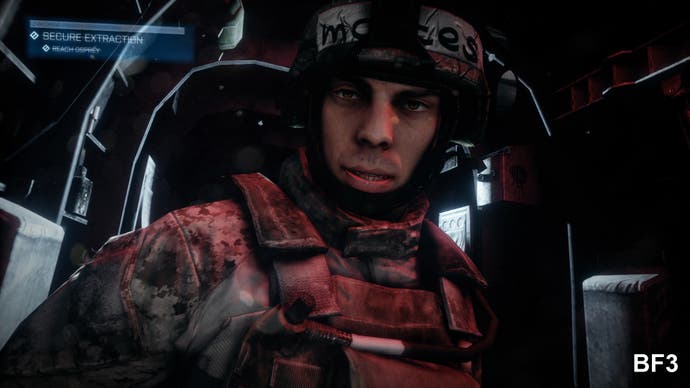
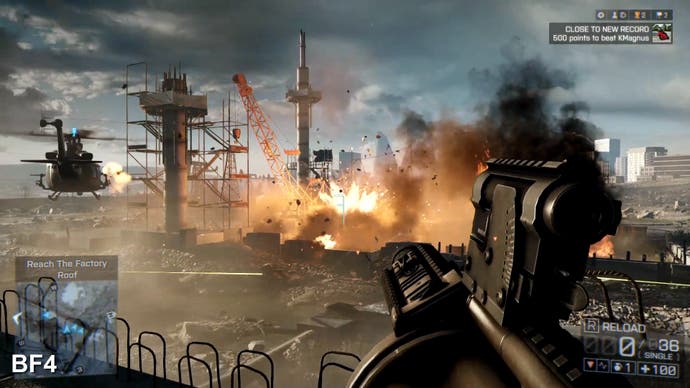
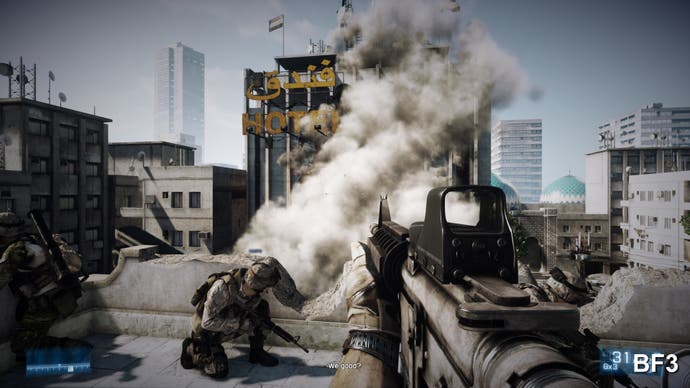
All this you can inevitably expect from the PC version running on a cutting-edge setup. Following the GDC demo, AMD was keen to let the world know that this play-through had been powered by its flagship tri-slot Radeon HD 7990. Costing in the region of £700 this is clearly super-enthusiast territory, with the game harnessing the card's two GPU cores clocked to 1000MHz and 925MHz, taking command of a colossal 6GB of GDDR5. On talking about ideal specs for next-gen console hardware, DICE's lead rendering architect Johan Andersson even placed 8GB of RAM at the top of his wish-list - a need taken care of by PlayStation 4 and the next-gen Xbox (though Durango's system reservation might compromise that to a certain degree). However, considering the more ambitious approach to single-player map design and physics, the fates of the 360 and PS3 versions of Battlefield 4 are less clear, and are likely poised to see similar nips and tucks to resolution and frame-rate as per the previous entry.
No doubt Electronic Arts is ready to crank up the marketing dial to 11 in the build-up to Battlefield 4's late-2013 release. The good news is that much of the hype so far appears warranted, with a very strong technical showing here, boding well for the other Frostbite 3 titles in development. Interviews with series producer Patrick Bach suggest engine tweaks have focused on aiding workflow behind the scenes, rather than being immediately obvious to the end consumer. This streamlining has clearly benefited game design, where within 17 minutes of footage we've seen many beautiful environments being rendered down to the tiniest details. Even so, improvements to facial animation, skin shaders, and destruction physics each stand as noted upgrades over what we've experienced in the third entry.
All in all, it's looking like a solid step forward for both series and engine alike, once again cementing DICE's place alongside Crytek and Epic Games as houses of the industry's class-leading multi-platform tech. And just as with Gears of War and Crysis series, the additions being made to Battlefield 4 highlight exactly where its underlying technology is headed. However, how successfully these top-end Frostbite 3 visuals will fare on the next-gen consoles remains to be seen...
